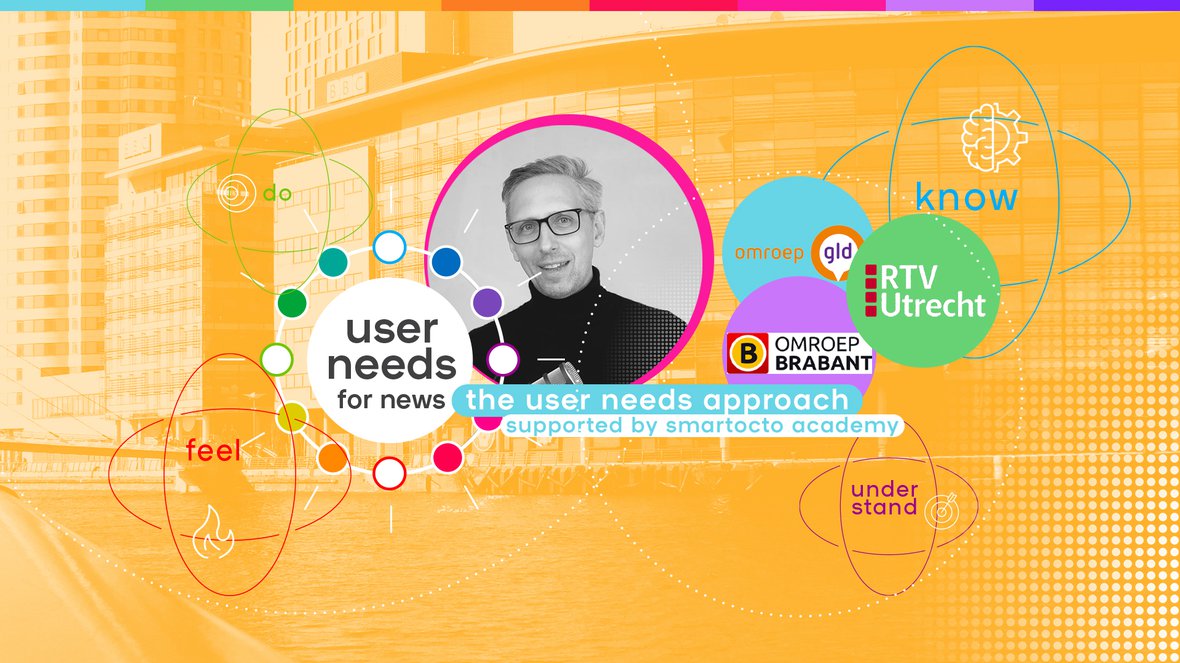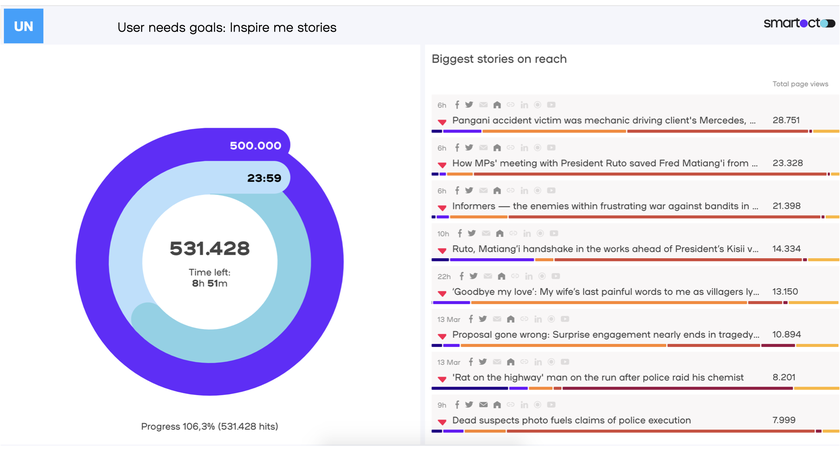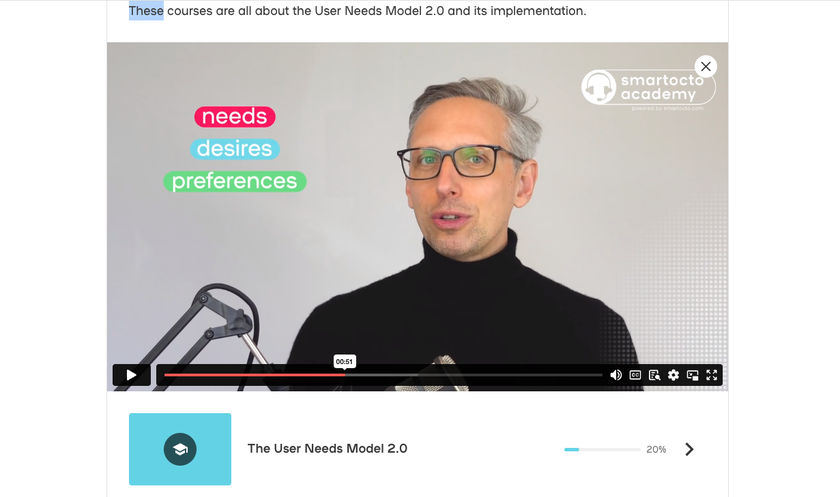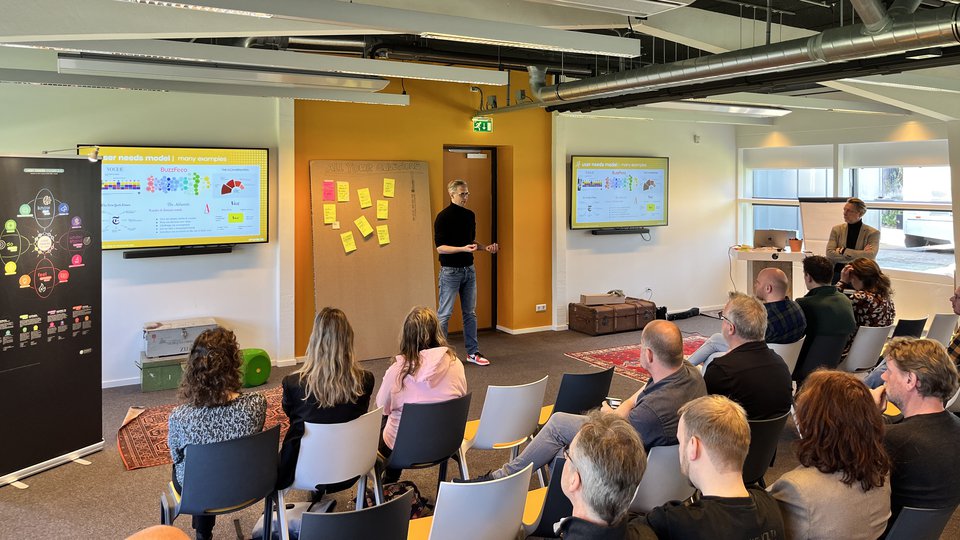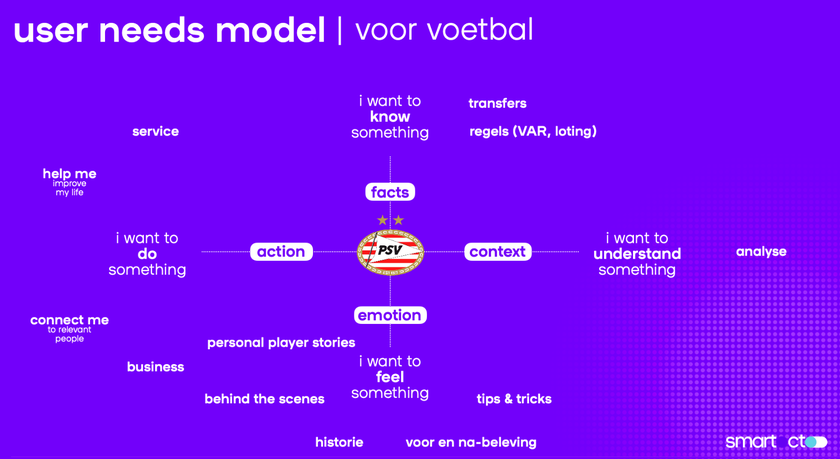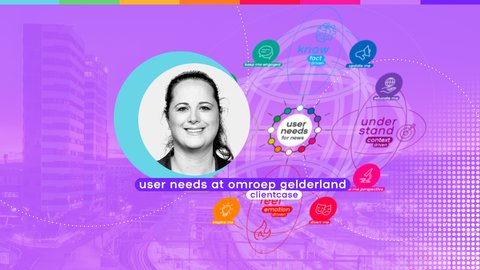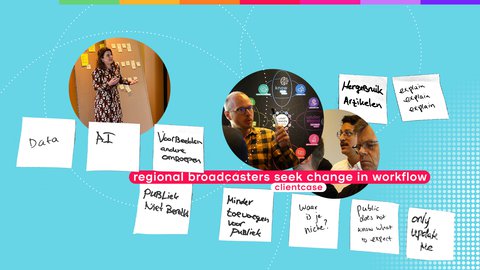During the final session, participants had the opportunity to ask questions. Since the participants' questions are inherently valuable, we have gathered them below along with their respective answers.
How do you implement user needs during your morning newsroom meeting?
It all starts with a shared idea about what the strategy of your organisation is. Which user needs are important? Why do they align with the brand? It is crucial that you know this before incorporating user needs into your daily routine.
Once you know it, you can brainstorm based on user needs. For example, write topics on a board and ask the attending editors what approach would be good, one that fits the news need 'Inspire me', for instance. The question then becomes: How can we create an inspiring story about this topic?
What do you do with colleagues who are unwilling to use this user need approach?
The reason we're here with you is because your bosses have said that this is the approach embraced by the organisation. Essentially, you could refer to that agreement. Your organisation thinks this is important.
However, let it also be an opportunity to discuss matters that are not often talked about in an editorial setting. There is a strong temptation to quickly move on to the next topic when something new is mentioned. Is the audience waiting for that? Or did the audience have a need that the editorial team overlooked? The use of the user needs model is nothing more than language that expresses these kinds of important questions. Dmitry Shishkin: “User needs are about choosing the right angle for your next story. Try to keep it simple for your colleagues."
Talking about successes but also failures helps a lot. Firstly you’ll learn from those insights but also you indirectly show to the organisation that user needs approach matters and it’s here to stay. Newsrooms should talk more about the results - for better and for worse.
For us it’s important to find a regional hook in every story. How does that combine with user needs?
In fact, it doesn't matter whether a story has a regional focus or if it's a national or international topic. User needs go beyond the desire to"tell me something about my surroundings." The user need ‘Connect me’ is indeed a user need that can be very important for regional broadcasters: ‘Connect me to the area I live in.’ However, it takes more than just providing information about the region. Take a look here to see what ‘Connect me’ entails, along with examples.
Take the dashboarding case of DPG, where regional newspapers are monitored by AD (the big national newspaper - the mothership). Once regional articles go big, they are republished on the AD.nl site. This might work for the regional broadcasters of the RPO as well. i.e. if Omroep Gelderland has Veluwe, Achterhoek, Gelderse Vallei and Rijk van Nijmegen as key sections - editors might put super local articles on those ‘homepages’, monitor how they perform and based on success criteria decide if and when to place those articles on the OmroepGelderland.nl home. This kind of careful monitoring will help achieve the kind of results they're after.
How can you implement user needs for radio and TV?
Collaboration between websites, radio, and television works better when user needs are implemented broadly. You can certainly send a TV reporter on an assignment to capture different perspectives on camera (Give me perspective). It is risky to send a reporter out without clear instructions and then say afterwards: "This is not really what we needed."
Omroep Brabant follows an online-first strategy, which means that TV items do not duplicate the content already created by the online editorial team. This approach ensures that visuals become a true enhancement to the content rather than more of the same. It makes it easier to serve all channels effectively.
What are good user needs for sports?
The Atlantic has some very specific sports related user needs, such as ‘Help me discover new ideas’. ‘Make me feel nostalgic’ is another user need which would be good for sports. But it’s hard: different types of sports have different kinds of user needs. Rutger explains his view in a sheet (see below). Remember that publishing regular news about sports - when your brand is not the most dominant, prominent or trustworthy platform - will probably mean that your results will not be great. Turning to an alternative user needs approach and mastering its execution can bring a lot more relevant results for your brand.
